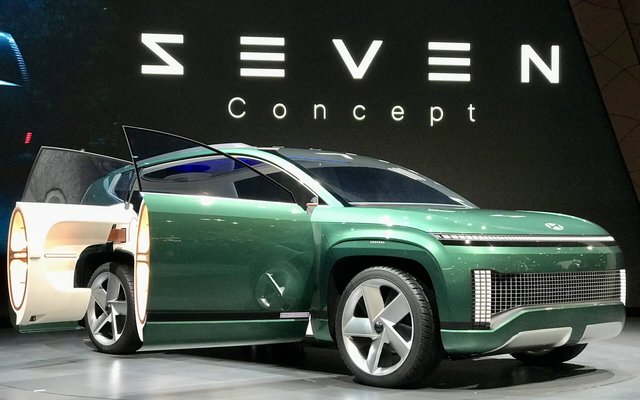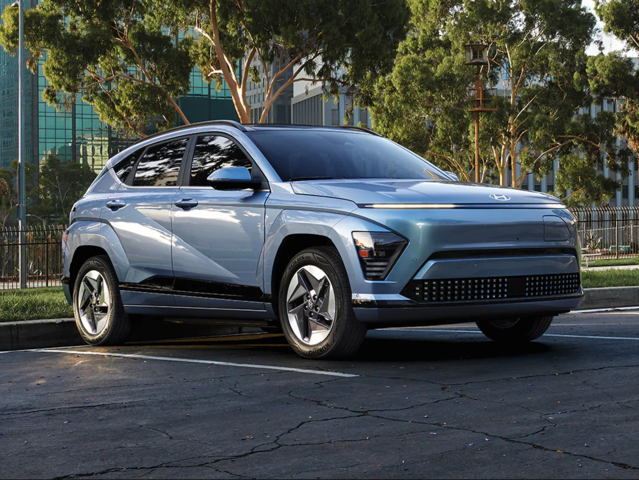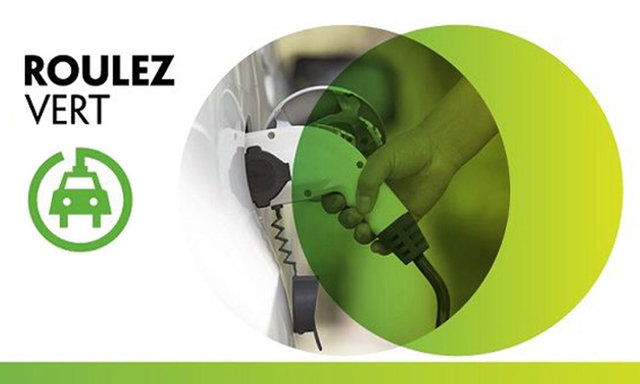Hyundai chose the 2021 Los Angeles Auto Show to unveil a new concept called Seven. This model foreshadows the introduction of a large electric SUV that will slot above the IONIQ 5 and will fittingly be named IONIQ 7.
Remember, the Korean automaker has a veritable onslaught of electric vehicles coming up—23 different models globally by 2025. SUVs are big business with still tremendous growth potential, so it made perfect sense to start with the IONIQ 5 and now present the future IONIQ 7.
The radically styled Seven concept is naturally based on the same Electric Global Modular Platform (E-GMP) as the IONIQ 5, but also the upcoming Kia EV6 and Genesis GV60. It features an 800V architecture allowing super-fast charging: Hyundai claims you can charge the battery from 10-80 percent capacity in about 20 minutes using a 350-kW charger. The target range is at least 300 miles, or 480 kilometres.
Breaking the Mold
With an ultra-low hood, long wheelbase, stretched roofline and rear suicide doors, the Hyundai Seven marks a pretty big departure from traditional SUVs.
The pixel-style LEDs are obviously reminiscent of those on the IONIQ 5, creating a unique lighting signature that forms part of the vehicle’s welcoming sequence when you unlock the doors. An innovative feature can be found in the wheels, namely active shutters that open or close to either improve brake cooling or reduce drag.
Mobile Lounge
The 3.2-metre-long wheelbase pushes those wheels to the very corners. This, combined with a flat floor, allowed Hyundai designers to completely rethink the interior layout, turning the Palisade-sized Seven into a mobile lounge.
A modular design means the cabin can take on various configurations, including one where the front seats turn around to face the L-shaped rear seats and create an open environment with a friendly atmosphere. Oh, that’s right, we forgot to mention that the Seven is an autonomous concept, with driving controls retracting into the dashboard in piloted mode.
Another highlight inside is the versatile Universal Island console. That and the OLED panoramic display allowing occupants to view any desired content or specify a different theme for the interior. Heck, there’s even a small refrigerator to provide chilled refreshment on the go and shoe-care compartments that refresh passengers’ footwear.
For the Post-COVID Era
COVID-19 has changed a lot of things including how automakers develop new models. The Seven uses various eco-friendly materials while offering segment-leading hygienic features.
Hyundai applied bio-paint to the exterior and hygienically recycled and renewable materials throughout the interior. Mineral plaster, bamboo wood and carpet, bio resin and interior paint are based on renewable sources that can reduce pollution from the production process. Extensive use of copper and hygienically treated fabric with proven antibacterial functions ensure all surfaces inside the Seven remain clean at all times.
The Hygiene Airflow System is pretty neat, too. In vertical mode, air is taken in through built-in air intakes in the roof rails from which it travels from above to below, and is extracted through the exterior vent behind the rear wheels. In horizontal mode, air flows from the slim dashboard to the rear vents.
Meanwhile, UVC Sterilization activates once the vehicle is vacated of its passengers. The control stick, first-row storage drawerand speakers pop up. Then, integrated sanitizing UVC lights help clean the living space of bacteria and viruses.
Of course, very few of the aforementioned features and technologies are likely to make their way into the Hyundai IONIQ 7. Hopefully the company will provide more details and reveal the production model sooner rather than later.






